Foghill
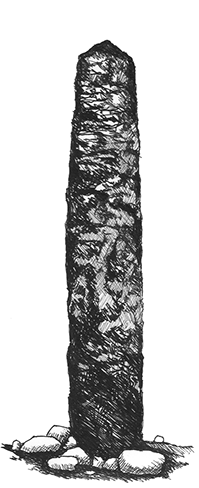
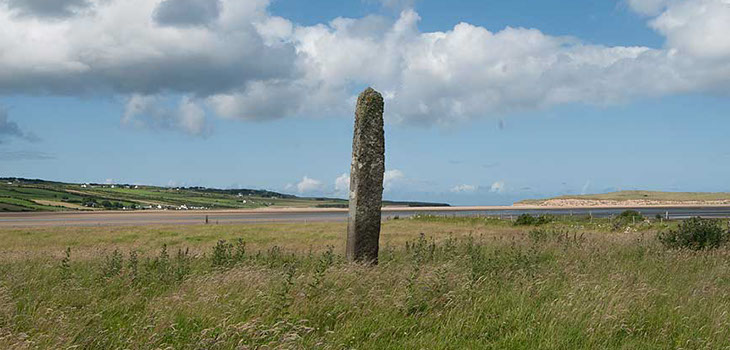
It was the cry of the children that I heard
Borne from the black wood o’er the midnight seas-
On Fochlut wood. Thus speaking, he arose
And, journeying with the brethren towards the west,
Fronted the confine of that forest old.
The oldest wood that ever grew in Eire
Was Fochlut wood-and gloomiest.
(Aubrey de Vere, Legends of St. Patrick)
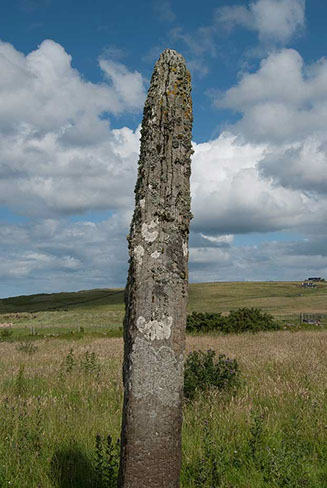 The name Foghill is an anglicised corruption of the gaelic Fó Choill meaning ‘under-the wood/forest. It has been identified as a modern form of Foclut or Foclad.
The name Foghill is an anglicised corruption of the gaelic Fó Choill meaning ‘under-the wood/forest. It has been identified as a modern form of Foclut or Foclad.
Tradition maintains that in ancient times Foghill formed part of ‘Silva Focluti’ the celebrated Wood of Focluth which once encompassed the area from Lacken Bay to Rathfran and onwards to Crosspatrick. The Wood of Focluth is the only actual place mentioned in St Patrick’s writings. It is the very place that Patrick saw in his dream visions when he was visited in his sleep and heard “the voice of those who were in the wood of Foclut, which is near the western sea” calling to him to return amongst them. The location of the Wood of Focluth has been the subject of much lively debate and controversy for many years among scholars of high repute.
“He (Patrick) gives us only one Irish place-name, that of the wood of Foclut. He implies that it was the place of his captivity. The weight of the evidence is that this was a wood in the West of Ireland, in what is now County Mayo, on the western shore of Killala Bay”.
(Liam de Paor, St. Patrick’s World,1993)
It is told that when Patrick returned to Ireland, having escaped from captivity here and made his way home, he was met by two maidens, Crebrea and Lassara, daughters of Gleru, who had previously given him shelter and passage to Britain, when he came to the Wood of Focluth as a footsore fugitive slave.
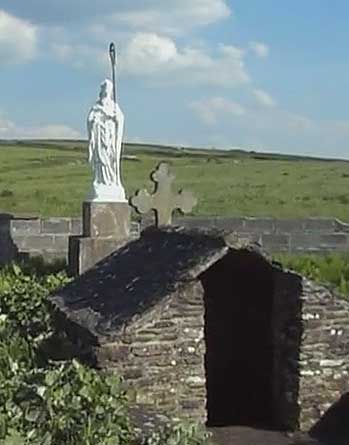 Their voices were the ones he later heard in his dream visions calling him back to Ireland. It is told that the two maidens received the pallium (religious collar given by the Pope) from Patrick and that he then blessed the spot and built them a little church at Tulach na nDruad –‘The Land/Place of the Druids’ in the Wood of Folcuth. This may be present-day Lisheen: a “Holy Well” of pilgrimage referenced as
Their voices were the ones he later heard in his dream visions calling him back to Ireland. It is told that the two maidens received the pallium (religious collar given by the Pope) from Patrick and that he then blessed the spot and built them a little church at Tulach na nDruad –‘The Land/Place of the Druids’ in the Wood of Folcuth. This may be present-day Lisheen: a “Holy Well” of pilgrimage referenced as 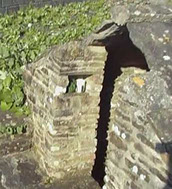 Tobar na Craoibhe – ‘The Well of the Branch’ now the ‘Blessed Well’ or ‘St. Patrick’s Well.’ Furthermore, in this still-flowing well at Foghill, Patrick is reputed to have baptized into Christianity, 900 converts, and in the presence of the throng raised to life a woman whom he had baptized earlier, but who had died suddenly in the aftermath. Since the days of St. Patrick, on ‘Garland Sunday’ the last Sunday in July, Foghill has been a place of annual Christian pilgrimage.
Tobar na Craoibhe – ‘The Well of the Branch’ now the ‘Blessed Well’ or ‘St. Patrick’s Well.’ Furthermore, in this still-flowing well at Foghill, Patrick is reputed to have baptized into Christianity, 900 converts, and in the presence of the throng raised to life a woman whom he had baptized earlier, but who had died suddenly in the aftermath. Since the days of St. Patrick, on ‘Garland Sunday’ the last Sunday in July, Foghill has been a place of annual Christian pilgrimage.
“I thought at that very moment I heard the voice of those who were near the wood of Foclud, which is by the western sea, and they cried out thus,… ‘We entreat thee holy youth to come.’…And I was very much pricked to the heart….Thanks be to God that after very many years the lord has granted to them according to their cry!”
(St.Patrick’s Confessio).
The birth-place of the renowned, author, folklorist and patriot, Micheál Mac Ruaidhri –Michael Rogers (1860-1936), once called ‘the greatest storyteller of his time,’ Foghill is also the location of a fine Bronze Age standing stone known as Leac Balbeni-‘the Stone of Balbeni.’
Directly across the strand from Foghill is the enchanted area known as Lacken, and it was here, on this spectacular stretch of beach that the fabled tenth- century ‘Battle of Lacken’ was fought between the Viking invaders and the native Irish. It is told that on this occasion the invaders were successfully repulsed!
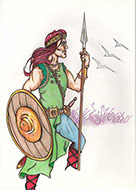 Tradition informs us that this area was once ranged over by one of Ireland’s greatest hero warriors - Goll Mac Morna. An uneasy ally of the great Fionn Mac Cumhaill, represented as ‘powerful, noble and magnanimous’ and always spoken of as being the ‘great-souled son of Morna,’ Goll was of equal rank to Fionn as leader of his own Connacht ‘Fianna’ troops. Named from birth as Aedh - translating alternatively in this instance as ‘Red’ of ‘Bright,’ he acquired the title Goll- ‘one-eyed’ when he lost an eye in battle with Cumhaill, Fionn’s father, whom he slew. He met his fate in typical hero-fashion, when having been pursued by the Leinster Fianna and cornered, he initially refused to surrender and was dying of starvation when he was surprised by a minor member of the Fianna, one Mac Smaille, and slain.
Tradition informs us that this area was once ranged over by one of Ireland’s greatest hero warriors - Goll Mac Morna. An uneasy ally of the great Fionn Mac Cumhaill, represented as ‘powerful, noble and magnanimous’ and always spoken of as being the ‘great-souled son of Morna,’ Goll was of equal rank to Fionn as leader of his own Connacht ‘Fianna’ troops. Named from birth as Aedh - translating alternatively in this instance as ‘Red’ of ‘Bright,’ he acquired the title Goll- ‘one-eyed’ when he lost an eye in battle with Cumhaill, Fionn’s father, whom he slew. He met his fate in typical hero-fashion, when having been pursued by the Leinster Fianna and cornered, he initially refused to surrender and was dying of starvation when he was surprised by a minor member of the Fianna, one Mac Smaille, and slain.
Micheál Mac Ruaidhri-Seanchaí, Poet, and Forgotten Patriot
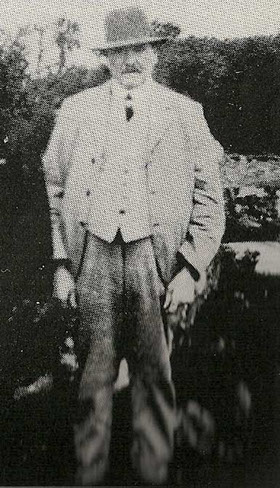 “In the mind’s eye of everyone who knows much of Gaelic Ireland...Micheál Mac Ruaidhri is a very vivid and racy personage. He overflows with character. He also overflows with North Connacht story and tradition and the Irish he speaks is particularly idiomatic and copious... No one would who takes grave and formal views of life would understand Micheál Mac Ruaidhri’s place in Ireland.”
“In the mind’s eye of everyone who knows much of Gaelic Ireland...Micheál Mac Ruaidhri is a very vivid and racy personage. He overflows with character. He also overflows with North Connacht story and tradition and the Irish he speaks is particularly idiomatic and copious... No one would who takes grave and formal views of life would understand Micheál Mac Ruaidhri’s place in Ireland.”
(P O Riain)
Dubbed “the greatest seanchaí (storyteller/historian) of our time” by Eoin MacNeill, and known to Douglas Hyde as “The Mayo Poet” because of the musical quality of his Irish, this mentor and confidante to Padraig Pearse, Micheál Mac Ruaidhri (Rogers), was born in Lower Foghill, near historic Kilcummin, in County Mayo, in the year 1860. His parents were Seoirse (George) Mac Ruaidhri and Nancy Cooper.
Once described by the critic Liam P.Ó Riain as a man who had “a flavour of wild earth and antique saga about him,” Mac Ruaidhri, as a result of a childhood accident, suffered from poor eyesight and bad vision all his life, and consequentially he spent just two days in school, preferring instead to spend his days with the elders of his area. In the process he amassed a vast knowledge of folklore, sagas, history, song and music, all of which he dearly loved whilst also gaining a genuine love for and understanding of the soil.
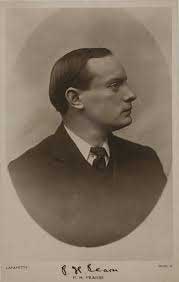 He once claimed, despite the fact that his maternal grandfather Patrick Cooper had been a school teacher at nearby Breastagh National School, that he ‘learned more from the oral Irish tradition in his locality than he could ever do from a formal education.’
He once claimed, despite the fact that his maternal grandfather Patrick Cooper had been a school teacher at nearby Breastagh National School, that he ‘learned more from the oral Irish tradition in his locality than he could ever do from a formal education.’
As a young fellow Micheál went to Dublin and worked originally as a gardener on an estate called Stradbrook, in Blackrock, before striking up a relationship with Padraig Pearse-ironically, he looked remarkably like Pearse’s late father.
From the foundation of Pearse’s Cullenswood School in 1908, in Ranelagh, Micheál taught practical gardening and horticulture and in 1911, he, along with his new bride, the former Alice Wallace, relocated with Pearse to ‘The Hermitage’ in Rathfarnham, the site of the new St Enda’s School.
The Hermitage was a school for boys based on the ancient Irish custom of fosterage and was selected as the ideal location because it contained the wealth of mythological, historical and revolutionary associations that Pearse and Mac Ruiadhri sought, in particular, it enshrined the memory of Robert Emmet and came with 50 acres of land. Mac Ruaidhri took up residence in the Gate Lodge which was afterwards referred to as St Endas Lodge and it was here that his daughter Bríd was born.
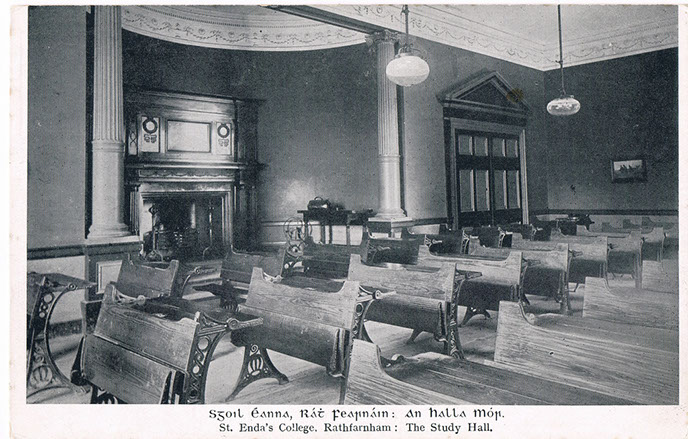 Originally conceived as St. Lorcan’s School, the name was soon changed and named St. Enda’s, after St. Enda of Aran, who it is told, abandoned the adventure-filled life of a heroic warrior to teach a devoted band of scholars in the remote seclusion of the Aran Islands.
Originally conceived as St. Lorcan’s School, the name was soon changed and named St. Enda’s, after St. Enda of Aran, who it is told, abandoned the adventure-filled life of a heroic warrior to teach a devoted band of scholars in the remote seclusion of the Aran Islands.
Only the sciences, in which an Irish vocabulary was lacking, were taught in English in this school whose motto translated as ‘Truth on our lips, strength in our hands, and purity in our hearts.’
The school was known for liberal teaching methods and unyielding nationalism and was perceived at the time as being a massive educational experiment, and boys attending the school learned a range of subjects from Egyptology to gardening on a large scale, which Mac Ruaidhri taught.
St Enda’s influence on the 1916 Rising is evident by the list of those participants who taught at or attended the school. In addition to Mac Ruaidhri, and the patriot Pearse brothers, Patrick and Willie, Thomas MacDonagh, Eamonn Ceannt and Con Colbert, also taught there, as did Padraic Colum and Standish O Grady: guest lecturers included W.B. Yeats, Alice Stopford Green, Sarah Purser, Eoin Mac Neill, Mary Hayden, Edward Martyn and Dr Douglas Hyde. Among the fifteen St Enda’s students who participated in the Rising were Desmond Ryan who fought in the GPO (General Post Office) and later became a prolific writer, and Joseph Sweeney who was a sniper on the roof of the GPO-he was afterwards interned at Frongoch Prison in Wales and later elected TD for Donegal in the first three Dails.
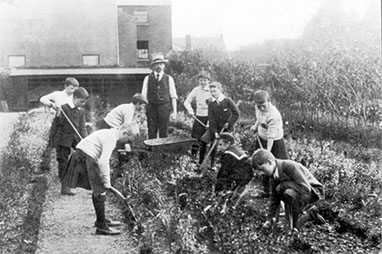 Pearse was not a good businessman and almost from the outset the school was always in financial difficulties and it is claimed that the revenue accrued from the sale of the vegetables and fruits grown by Mac Ruaidhri in the gardens, often kept the wolf from the door.
Pearse was not a good businessman and almost from the outset the school was always in financial difficulties and it is claimed that the revenue accrued from the sale of the vegetables and fruits grown by Mac Ruaidhri in the gardens, often kept the wolf from the door.
It is known that not only was Mac Ruaidhri a great friend to Pearse, but that he also had a huge influence on him; as a sort of father figure. MacRuaidhri is credited with being the man who advised Pearse to spend time in Rosmuc Connemara (he was also a great friend of Eamon De Valera and his family).
Despite his near blindness, Micheál was the well-known author of five books in the Irish language which he wrote under the pseudonym Méathóg Ghuill and dictated to his daughter to Padraig Pearse, Sinead De Valera, wife of Eamon, and his daughter, Bríd. The pseudonym was taken from a legendary rock which still sits in Lacken on an ancient Fianna battleground and is named for Gholl Mac Mórna, a valiant Fenian warrior who died on the rock after the Battle of Gabhra about 284 A.D. Today locals refer to the rock as Carraig Phádraig - St. Patrick’s Rock, as local legend maintains that St Patrick flung the rock from Nephin Mountain.
Furthermore, Micheál was a regular contributor to Pearse’s newspaper An Cliamh Solas - ‘The Sword of Light,’ in addition he was also the recipient of seven gold medals in feiseanna: the first for cainteoireacht (conversation) the others for óráidíocht (public speaking). Some of MacRuaidhri’s aforementioned works became prescribed texts for the National University and Intermediate Exams.
A member of E Company, 4th Battalion, Dublin Brigade, also known as the ‘Rathfarnham Brigade, he was in the G.P.O. in what is now O’ Connell Street, Dublin, with his protégé Pearse, on Easter Monday, 24 April, 1916. In fact he was beside Pearse when he read aloud from the steps, the Proclamation of the Irish Republic, announcing that the rebels were setting up a Provisional Government to replace the Government of Britain in Ireland. But due to his bad eyesight and the fact that he was 56 years of age at the time, he was ordered back to St. Enda’s with instructions to destroy or hide secret documents and to look out for Pearse’s mother, sister, and his own wife Alice and daughter Bríd.
 After the suppression of the 1916 Rebellion, Mac Ruaidhri was arrested as a rebel and imprisoned first in Stafford Jail, then in Frongoch Prison: he was the oldest prisoner in the gaol and spent his days teaching Irish and History to the other rebel inmates. His brother Pat also took part in the 1916 Rising as part of the Boland’s Mills Garrison, and also served time in Frongoch. In A Chronicle of Jails, the former imprisoned Irish rebel Darrell Figgis wrote:
After the suppression of the 1916 Rebellion, Mac Ruaidhri was arrested as a rebel and imprisoned first in Stafford Jail, then in Frongoch Prison: he was the oldest prisoner in the gaol and spent his days teaching Irish and History to the other rebel inmates. His brother Pat also took part in the 1916 Rising as part of the Boland’s Mills Garrison, and also served time in Frongoch. In A Chronicle of Jails, the former imprisoned Irish rebel Darrell Figgis wrote:
“At seven each morning after breakfast and at eight at night the bell was rung and we all gathered for public prayers. Mac Ruaidhri, Irish Orator and Padraig Pearse’s gardener led the rosary. Englishmen speak much of our religious differences. It devolved upon me as a Protestant to summon the prayers and none thought otherwise of it than as a natural thing, while every Protestant knelt with his fellows in prayer to one God.”
On his release Mac Ruaidhri returned to St. Enda’s and resumed his career as gardener.
In one of his last letters from Kilmainham Gaol, before his execution, ‘An Piarsach,’ as Padraig Pearse was sometimes referred to, bade his great friend farewell with the following poetic words:
“Slán leat a Mhichal,
Slán leat go deo;
Slán leat a Mhicheál
As Condae Mhaigheo.”
(Translation)
Good-bye Michael,
Good-bye forever
Good-bye Michael,
From County Mayo
After the signing of the Anglo-Irish Treaty in 1922, a treaty he disagreed with, MacRuaidhri took no further part in politics and concentrated instead on his writing and folklore collecting and became a sort of oracle, for his good friend Eamon De Valera, and also for Douglas Hyde and Michaél O Tiomaindhe (Michael Timoney) from Lahardane, who is often claimed as the greatest folklorist of his generation. It is told that O Tiomaindhe and MacRuaidhri, these two Mayo- born giants of Irish folklore often sang together and one of their favourite songs was Fáinne Geal an Lae - the melody of which is probably better known as ‘The Dawning of the Day.’
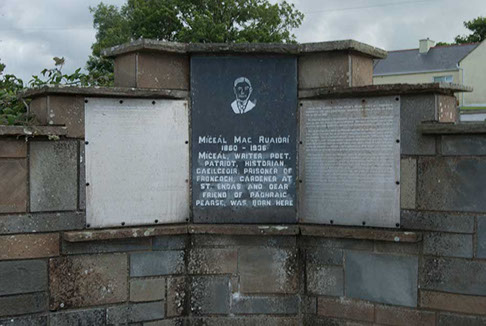 Micheál MacRuaidhri died on 31 May, 1936, in his home, St. Endas Lodge –he was 76 years of age. When informed of the death, the then Taoiseach, Eamon De Valera, who was down the country on political business at the time, requested the MacRuaidhri family not to lid the coffin until he would see his old friend for the last time and pay his respects: this he did by marching to the coffin and formally saluting. Micheál Mac Ruaidhri, this man of flawless nationalist credentials was buried in Glasnevin cemetery, Dublin; he is commemorated in his native Foghill with a monument which stands on the site of his birthplace.
Micheál MacRuaidhri died on 31 May, 1936, in his home, St. Endas Lodge –he was 76 years of age. When informed of the death, the then Taoiseach, Eamon De Valera, who was down the country on political business at the time, requested the MacRuaidhri family not to lid the coffin until he would see his old friend for the last time and pay his respects: this he did by marching to the coffin and formally saluting. Micheál Mac Ruaidhri, this man of flawless nationalist credentials was buried in Glasnevin cemetery, Dublin; he is commemorated in his native Foghill with a monument which stands on the site of his birthplace.
The following poem was written for Micheál MacRuaidhri by Niall Mac Neill, a former pupil in St Endas, Its known and well documented that all the pupils had a great affection for Michael and loved him dearly, but it is also further documented that when Michael was roused to anger by the pupils, he could and often did, put the ‘fear of God in them.’ Despite this, the affection and gratitude of the pupils for Michael shines through and is clearly evident. A Jig- Between the Tides was composed and played by Belmullet native Dave Munnelly and featured in the 2001 TG4 documentary based on MacRuaidhri’s life titled, Solas sa nDorchadas.
Sé Micheál Mag Ruaidhri
An fear mór láidir
Bhios ag obair sa nGarrdha
Ag cur ubhall is prátaí
Is baolach dul in aice leis,
Bhrisfeadh sé do cheann bocht;
A’bualadh níl a leitheide,
Sé a casfadh do chnámha!
Má theighir sa nGarrdha
Cuirfe sé ar fán thú,
Is tú bheas a’ caoineadh
Agus Micheál ag gáiridhe.
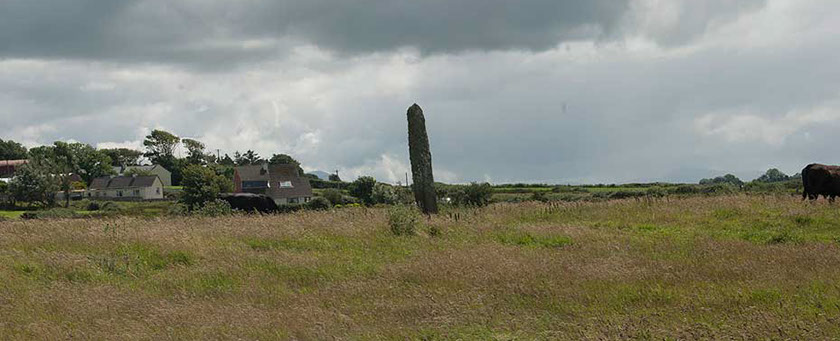
View these photos in a gallery































